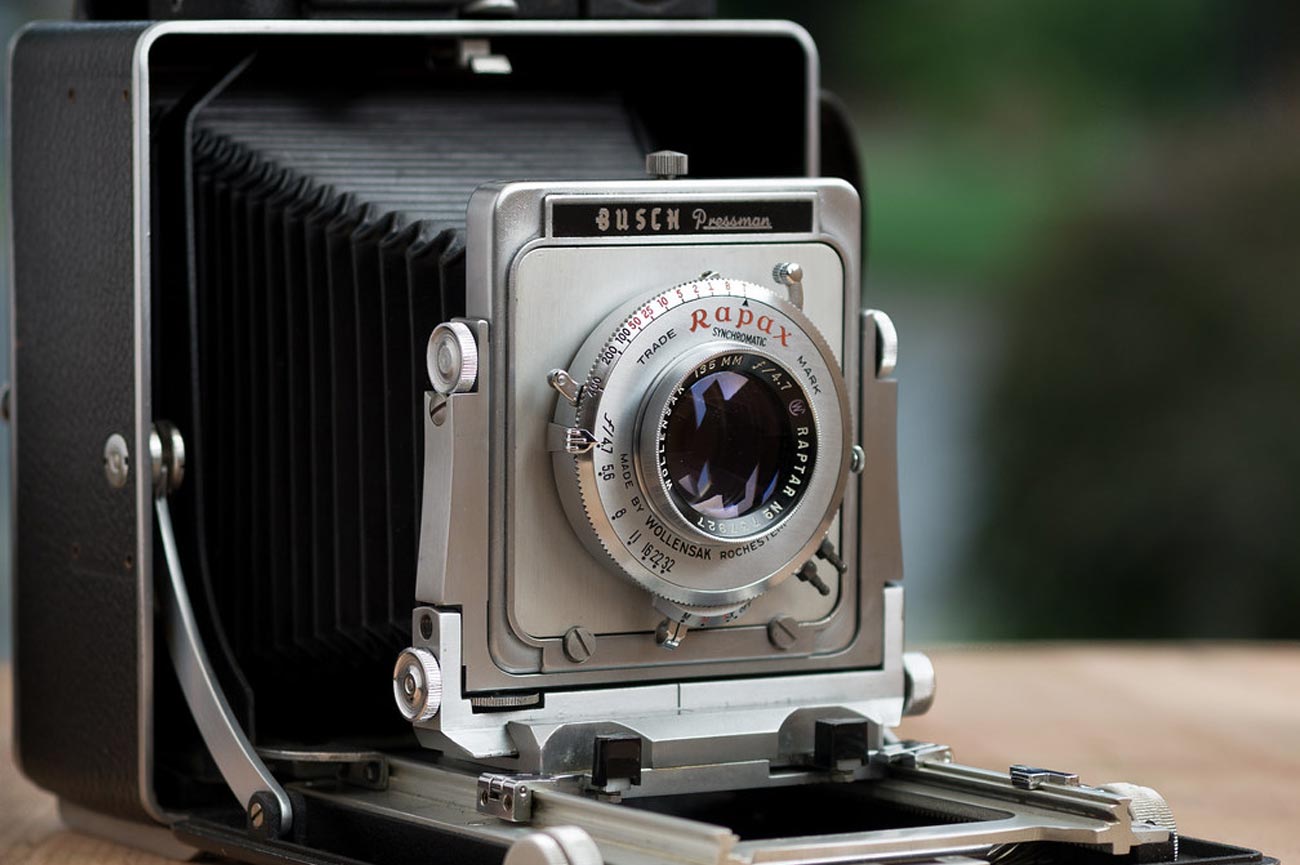Large Format Film Camera Controls

Photo by Steve Walker Photography. CC BY 2.0
Rise and Fall
Rise and fall movements involve moving either the front or rear of the large format camera vertically. These movements are important because they will help change the perspective of the image, particularly in architectural photography. A rise, for instance, will eliminate parallel lines that converge due to the large perspective, as in a tall building that seemingly becomes narrower near the top. When a camera is tilted upward, as in the case of 35mm or medium format photography, this perspective becomes apparent. But with the rise movement, the lens is raised to include the top of the building without having to tilt the camera upward, eliminating the converging parallel lines.
Shift
Moving the front plane of a viewfinder camera horizontal is called shift. Shift works similarly to rise and fall in that it helps to eliminate converging parallel lines, except shift works on a horizontal rather than vertical. This large format photography tip is also often used to help remove the image of the camera from a reflective surface like mirrors or windows.
Tilt
Tilt allows the photographer to tilt the lens backwards or forwards. Tilt is used most often for landscape photography as it allows any horizontal or vertical plane to be brought into sharp focus. Naturally, as is the case with 35mm cameras, the plane of focus is parallel to the horizontal orientation of the film. But with viewfinder cameras, the plane of focus can be changed to a vertical orientation. The purpose of tilting is to better control depth of field using an aperture at which the lens performs the best. This will avoid the longer exposure required for great depth of field to occur and help to eliminate possible motion blur.
Swing
Swing is similar to tilt, but on the horizontal axis instead of vertical. It is done by swiveling the lens from side to side. Swing also helps control depth of field for large format photography. For instance, a long fence could be captured with a complete, sharp focus.
See film types for different types of film for all camera types, including 35mm, medium format and large format. Or, for some additional photography tips and techniques, please see composition, motion photography, and night photography.
















